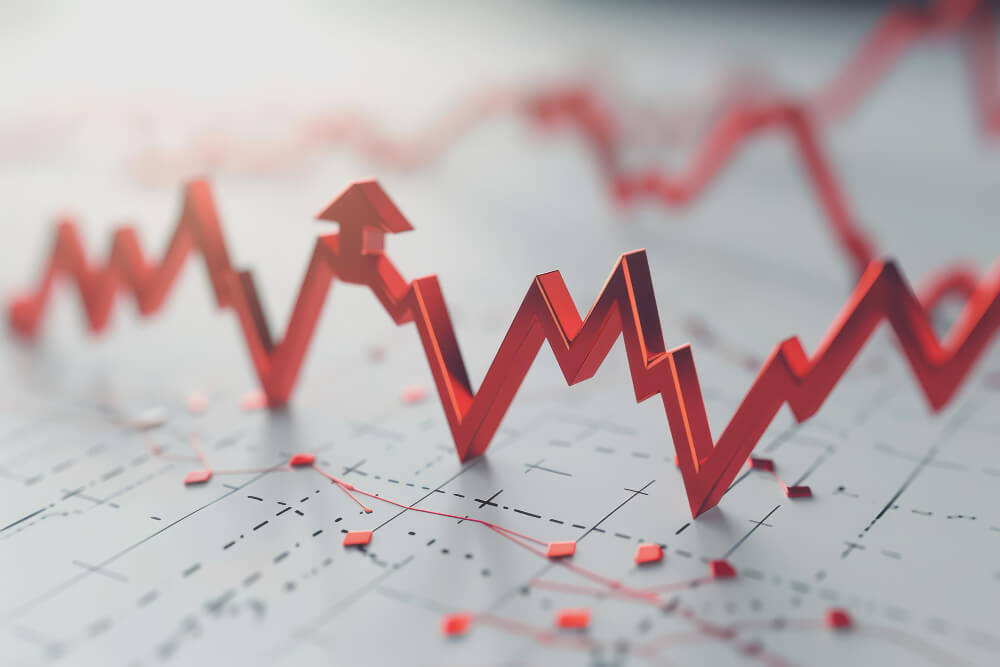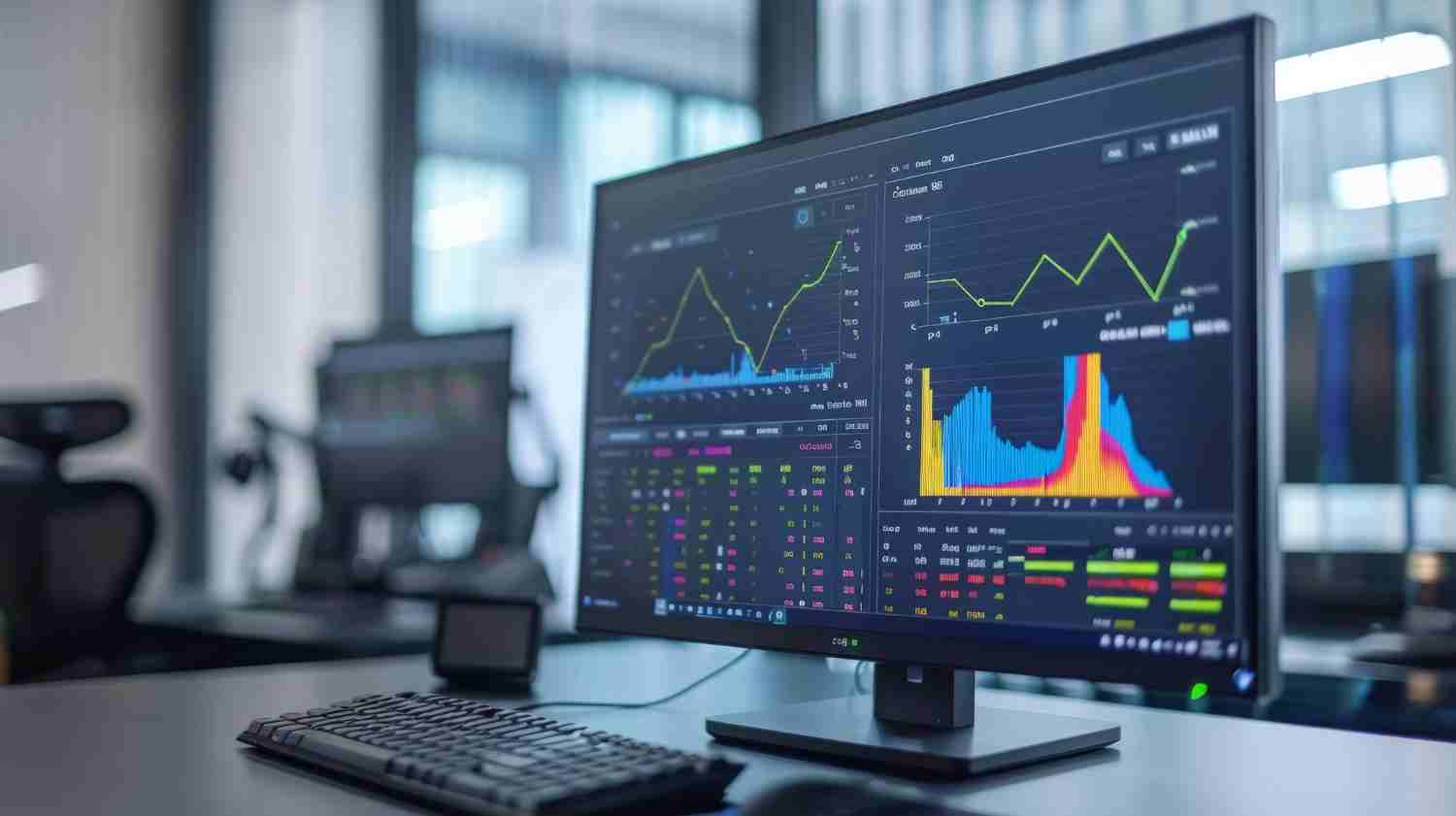When diving into the world of forex trading, understanding the various factors that influence currency prices is essential. One of the key indicators that traders monitor closely is the Consumer Price Index (CPI). This extensive guide will explore how trends in China’s CPI impact the forex market and how you can leverage this information to make smarter trading decisions.
What is CPI?
The Consumer Price Index (CPI) is a statistical measure that examines the weighted average of prices of a basket of consumer goods and services, such as transportation, food, and medical care. Essentially, the CPI reflects the cost of living and is a primary indicator of inflation within an economy. By tracking changes in the CPI, economists and traders can get a sense of the inflation rate, which in turn helps to understand the purchasing power of a currency.
To break it down further, imagine you’re tracking the prices of everyday items in a grocery basket over a certain period. If the prices of these items go up, the CPI rises, indicating inflation. Conversely, if the prices drop, the CPI falls, indicating deflation. The CPI is not just a number; it’s a comprehensive reflection of economic health.
Why is China’s CPI Important?
China is the world’s second-largest economy, and its economic health significantly influences global markets. Therefore, economic indicators from China, such as the CPI, are closely watched by forex traders and economists worldwide. The CPI can indicate shifts in inflation, which can subsequently affect the value of China’s currency, the yuan (CNY), and influence the forex market on a global scale.
Consider the ripple effect: when China’s CPI shows significant changes, it doesn’t just impact China; it affects global trade, investment flows, and economic policies in other countries. For example, if China’s CPI indicates rising inflation, it might prompt the People’s Bank of China (PBOC) to adjust interest rates, which can influence the currency exchange rates globally.
Understanding Inflation and Its Impact on Forex
Inflation is the rate at which the general level of prices for goods and services rises, eroding purchasing power. When inflation is high, each unit of currency buys fewer goods and services, prompting central banks to intervene, usually by raising interest rates to cool down the economy.
For forex traders, understanding inflation trends is crucial because they directly influence currency value. High inflation can lead to higher interest rates, making a currency more attractive to investors seeking higher returns. Conversely, low inflation might prompt central banks to lower interest rates, making the currency less attractive.
Imagine inflation as the heartbeat of an economy. When it beats too fast (high inflation), the central bank administers a “cool down” treatment (raising interest rates). When it beats too slow (low inflation or deflation), the bank tries to stimulate it (lowering interest rates). These treatments significantly influence currency values, making inflation trends a critical focus for forex traders.
How is China’s CPI Calculated?
China’s CPI is calculated by the National Bureau of Statistics of China (NBS). They gather data on the prices of thousands of goods and services across the country. This data is categorized and weighted to reflect the average consumption patterns of Chinese households. The goods and services are divided into various categories, such as food, clothing, transportation, healthcare, and education.
The calculation process involves several steps:
- Data Collection: Prices are collected from urban and rural areas to ensure a comprehensive representation.
- Weighting: Each item in the CPI basket is assigned a weight based on its relative importance in the average consumption pattern.
- Index Calculation: The weighted prices are then averaged to calculate the CPI for the month or year.
This process ensures that the CPI reflects the real changes in the cost of living for Chinese consumers.
Monthly vs. Annual CPI Reports
China releases CPI data both monthly and annually. Monthly reports provide a snapshot of recent economic trends, allowing traders to gauge short-term market movements. In contrast, annual reports offer a broader view of the overall economic health, helping traders understand long-term trends.
The monthly CPI reports are particularly useful for forex traders looking to make short-term trades. These reports can indicate sudden changes in inflation that might prompt immediate market reactions. For instance, an unexpected rise in monthly CPI might lead to a quick appreciation of the yuan as traders anticipate central bank intervention.
On the other hand, annual CPI reports provide insights into the longer-term economic trajectory. They help traders understand whether inflationary pressures are building up or subsiding over time, which can influence long-term trading strategies and investment decisions.
The Relationship Between CPI and Forex Rates
The relationship between CPI and forex rates is direct and significant. When the CPI rises, indicating higher inflation, the central bank may raise interest rates to cool down the economy. Higher interest rates can attract foreign investments, increasing demand for the currency and thus its value. Conversely, if the CPI falls, indicating lower inflation, the currency may depreciate as the central bank might lower interest rates.
Think of the CPI as a weather vane for economic policy. When it points to high inflation, central banks often tighten monetary policy by raising interest rates, making the currency more attractive to investors. When it points to low inflation or deflation, central banks might loosen monetary policy by lowering interest rates, reducing the currency’s attractiveness.
Forex traders closely monitor CPI data to anticipate these central bank actions. For instance, if China’s CPI is rising rapidly, traders might expect the PBOC to raise interest rates. Anticipating this, traders might buy yuan, expecting its value to increase. Conversely, if the CPI is falling, traders might sell yuan, anticipating a decrease in value.
How Traders Use CPI Data
Forex traders use CPI data to predict central bank actions and adjust their trading strategies accordingly. Here’s how:
- Predicting Interest Rate Changes: By analyzing CPI trends, traders can anticipate whether the central bank will raise or lower interest rates. For example, a rising CPI might lead traders to expect a rate hike, prompting them to buy the currency.
- Timing Trades: Monthly CPI reports can indicate short-term market movements, allowing traders to time their trades to capitalize on these movements. For instance, an unexpected rise in CPI can lead to a quick appreciation of the currency, providing a trading opportunity.
- Hedging: Traders might use CPI data to hedge their positions. If they expect higher inflation based on CPI trends, they might hedge against currency depreciation by taking positions in assets likely to benefit from inflation.
Imagine you’re navigating a ship in volatile waters. The CPI data acts like a compass, helping you anticipate storms (economic changes) and adjust your course (trading strategy) accordingly.
Analyzing Historical CPI Trends
Examining historical CPI trends can provide valuable insights into future movements. For instance, if China’s CPI has been steadily increasing over several months, it might suggest a persistent inflationary trend. Traders can use this information to predict future currency movements and adjust their strategies accordingly.
Historical analysis involves looking at:
- Long-Term Trends: These can indicate whether inflationary pressures are building up or subsiding over time.
- Seasonal Patterns: Some price changes are seasonal, such as food prices during harvest seasons. Understanding these patterns can help traders avoid misinterpreting temporary changes.
- Economic Cycles: Analyzing CPI data in the context of broader economic cycles can provide deeper insights. For instance, rising CPI during an economic expansion might have different implications than rising CPI during a recession.
By analyzing these historical trends, traders can develop a nuanced understanding of CPI movements and make more informed trading decisions.
Comparing China’s CPI with Other Countries
Comparing China’s CPI with that of other major economies, such as the US or Eurozone, can provide additional insights. Differences in inflation rates can impact exchange rates and offer trading opportunities.
For example, if China’s CPI is rising faster than the US CPI, it might suggest that the yuan will appreciate against the dollar. Traders can use this information to adjust their positions accordingly. Conversely, if the US CPI is rising faster, it might suggest that the dollar will appreciate against the yuan.
Such comparisons help traders understand the relative economic conditions of different countries and anticipate exchange rate movements.
The Impact of External Factors on China’s CPI
Several external factors can influence China’s CPI, including global oil prices, trade policies, and geopolitical events. For instance, a spike in global oil prices can lead to higher transportation costs, pushing up China’s CPI. Forex traders need to be aware of these factors to fully understand CPI trends.
Here are some key external factors to consider:
- Global Oil Prices: As a major importer of oil, changes in global oil prices can significantly impact China’s CPI. Higher oil prices can lead to higher transportation and production costs, raising the CPI.
- Trade Policies: Changes in trade policies, such as tariffs and trade agreements, can affect import and export prices, influencing the CPI.
- Geopolitical Events: Events such as political instability, conflicts, and sanctions can impact supply chains and prices, affecting the CPI.
By monitoring these external factors, traders can gain a more comprehensive understanding of China’s CPI trends and make more informed trading decisions.
Using CPI in Technical Analysis
Incorporating CPI data into technical analysis can enhance your trading strategy. For example, you can use CPI data to confirm trends indicated by technical indicators like moving averages or the Relative Strength Index (RSI). If CPI data supports a technical trend, it can increase confidence in your trade decisions.
Here’s how you can integrate CPI data with technical analysis:
- Trend Confirmation: Use CPI data to confirm trends identified by technical indicators. For instance, if a rising CPI supports an upward trend indicated by moving averages, it can strengthen your conviction in a long trade.
- Divergence Identification: Identify divergences between CPI trends and technical indicators. For example, if CPI is rising while the currency is in a downtrend, it might indicate a potential reversal.
- Support and Resistance Levels: Use CPI data to identify potential support and resistance levels. For instance, significant changes in CPI might correspond with key levels in technical charts.
Integrating CPI data with technical analysis provides a more comprehensive approach to trading, helping you make more informed decisions.
Practical Trading Tips Using China’s CPI
Here are some practical tips for trading forex using China’s CPI data:
- Stay Updated: Regularly check China’s CPI releases and stay informed about upcoming reports. Use economic calendars to track release dates and plan your trades accordingly.
- Diversify Your Analysis: Don’t rely solely on CPI data. Consider other economic indicators, technical analysis, and external factors to make well-rounded trading decisions.
- Risk Management: Always employ risk management techniques, such as stop-loss orders, to protect your investments. The forex market can be volatile, and having a risk management strategy is crucial.
- Monitor Central Bank Policies: Keep an eye on the PBOC’s policies and statements. Central bank actions are often influenced by CPI trends, and understanding their policy stance can help you anticipate market movements.
- Use Multiple Time Frames: Analyze CPI data across different time frames to get a comprehensive view. Monthly data can provide short-term insights, while annual data offers a long-term perspective.
- Stay Informed About External Factors: Keep track of global economic developments, trade policies, and geopolitical events that can impact China’s CPI.
By following these tips, you can effectively incorporate China’s CPI data into your forex trading strategy and improve your chances of success.
Conclusion
Understanding and analyzing China’s CPI trends is a powerful tool for forex traders. By keeping an eye on CPI data, you can gain insights into inflation trends and predict central bank actions, ultimately helping you make more informed trading decisions. Remember, the forex market is influenced by a complex web of factors, and CPI is just one piece of the puzzle. Combine this knowledge with other economic indicators and sound trading strategies to maximize your success in the forex market.
Are you tired of losing money with bad forex broker? If yes, please check the list of best forex brokers here.
FAQs
1. How often is China’s CPI data released?
China’s CPI data is released monthly and annually by the National Bureau of Statistics of China (NBS).
2. What does a rising CPI indicate?
A rising CPI indicates increasing inflation, which can lead to higher interest rates and potentially a stronger currency.
3. How does CPI affect forex trading?
CPI affects forex trading by influencing inflation expectations and central bank policies, which can impact currency values.
4. Can I trade forex using only CPI data?
While CPI data is important, it’s advisable to use it in conjunction with other economic indicators and technical analysis for well-rounded trading decisions.
5. What external factors can influence China’s CPI?
External factors such as global oil prices, trade policies, and geopolitical events can influence China’s CPI. Being aware of these factors is crucial for understanding CPI trends.
Get more confirmed trade setup forex signals here.
Check the live trading account and the user review of the signal followers.
Learn forex chart patterns for profitable trading.







